Tutorial 2
Prompting discussion
Discussions with children during a reading session support their linguistic development and broaden their knowledge.
These discussions are particularly important for deaf and hard of hearing children, as they have fewer opportunities for incidental learning. They cannot access acoustic information such as casual conversation among other people.
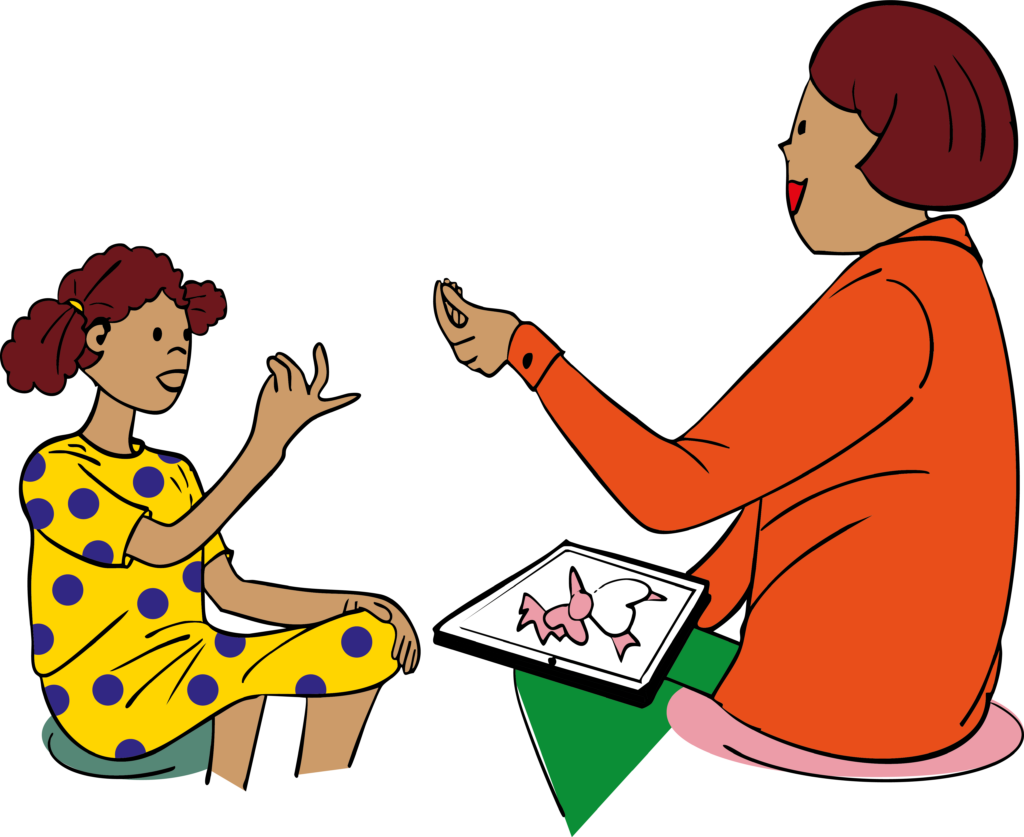
Prompt prior linguistic and content-related knowledge
Discuss the title page
Talk about the picture and the title on the book cover. Guess what might happen in the book.
Look at the pictures
Begin by looking at the pictures in the book, and think about what they mean.
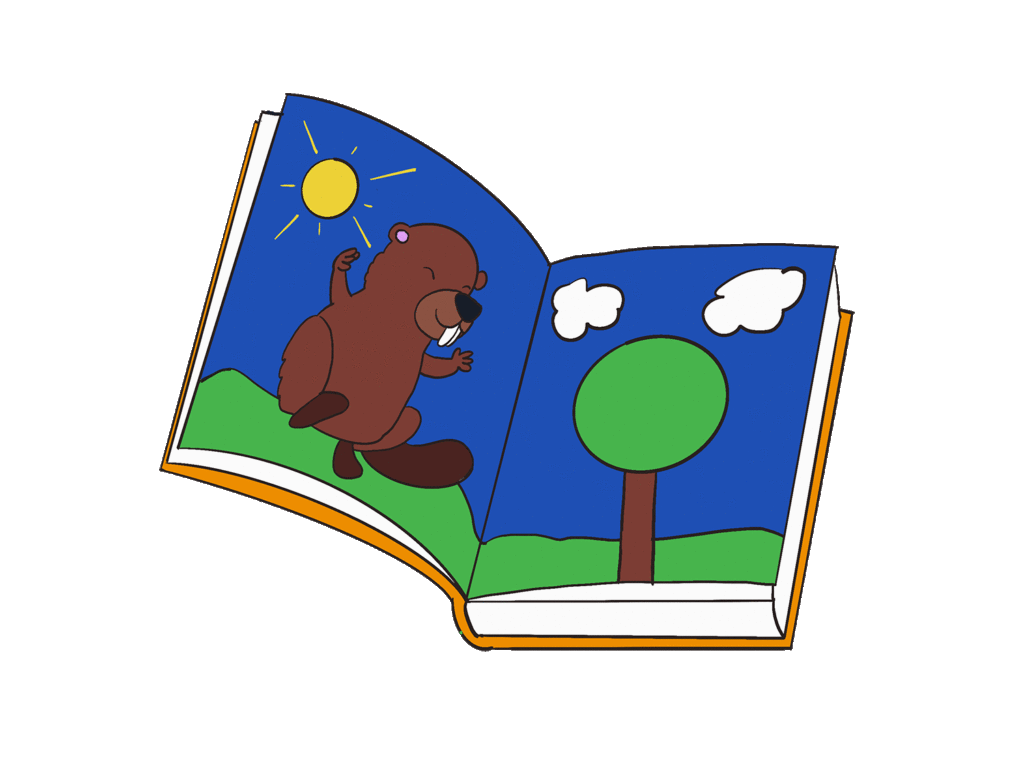
Combine picture and text
Picture books usually comprise pictures and text. Understanding both aspects in combination is a challenge for anyone. Practise connecting the picture with the text, and aiding comprehension.
Use questions and stimulate engagement
Begin your reading session with simple questions to stimulate the children’s interest, e.g. “Who likes football?” or “What can you find in a forest?” Point to details in the picture on the title page as a silent way to stimulate the children’s ideas.


Combine picture and text
Picture books usually comprise pictures and text. Understanding both aspects in combination is a challenge for anyone. Practise connecting the picture with the text, and aiding comprehension.
Use questions and stimulate engagement
Begin your reading session with simple questions to stimulate the children’s interest, e.g. “Who likes football?” or “What can you find in a forest?” Point to details in the picture on the title page as a silent way to stimulate the children’s ideas.
Ask questions to stimulate conversation
Questions help to attract children’s attention and encourage them to think. They promote conversation and help consolidate learning. There are various types of question which you can switch between. You can find examples in the ReaDi picture books, by clicking on the lightbulb ![]() icon.
icon.
Comprehension
“Why don’t the animals jump in the water?”
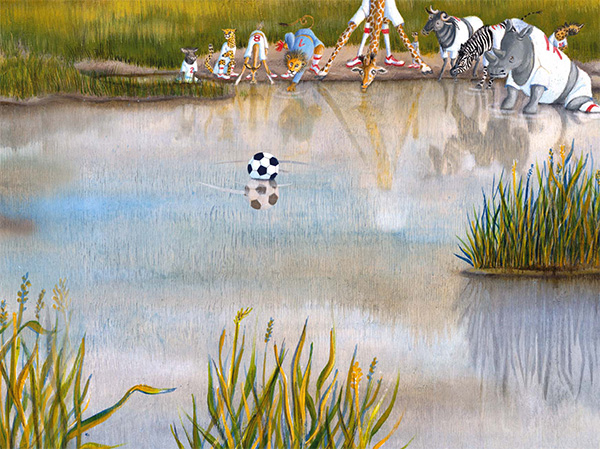
Questions about appearance
“The lion is wearing a blue T-shirt. All the other animals are wearing white T-shirts. Why is that?”
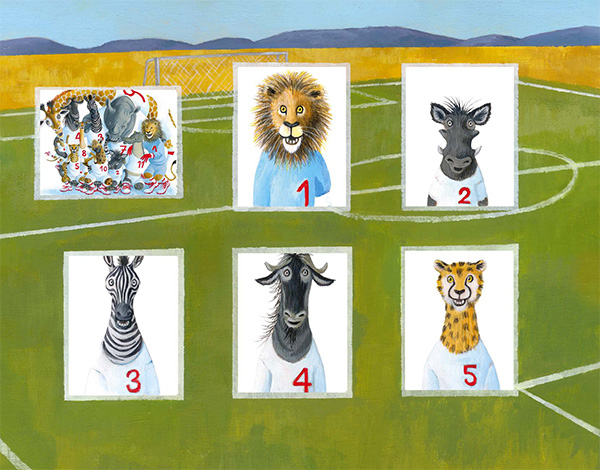
Questions on the pictures
“Do you know what some of these animals are?”
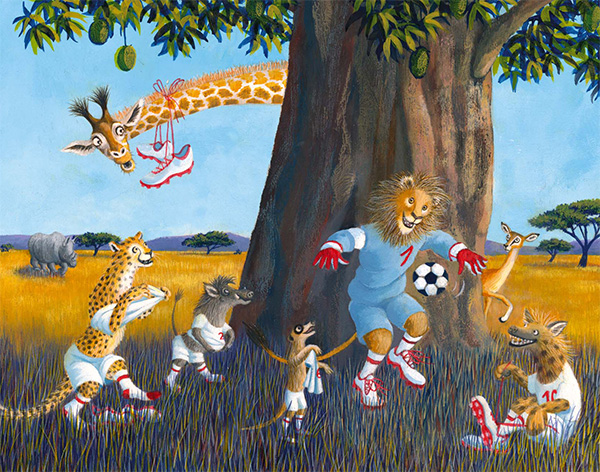
Questions on how the story might continue “Do you think the ball will go into the goal?”

Factual questions
“Do you know what a pass is?”
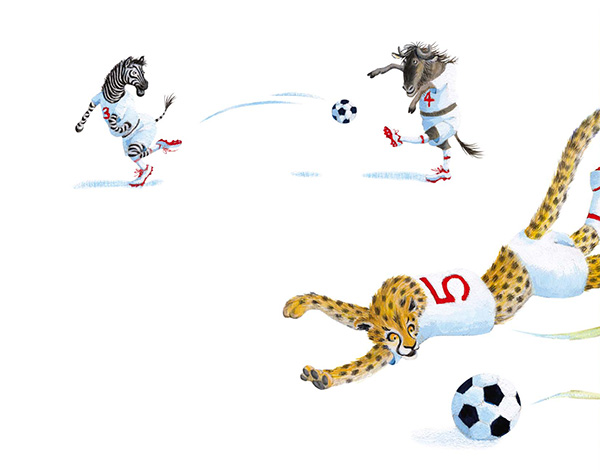
Questions about feelings
“The ball went into the goal. How do the two animals feel?”
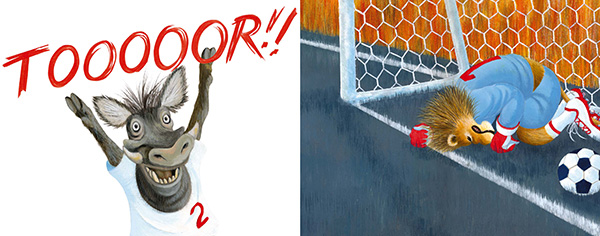
Questions about behaviour
“The hyena is really cross. What is she doing now?”
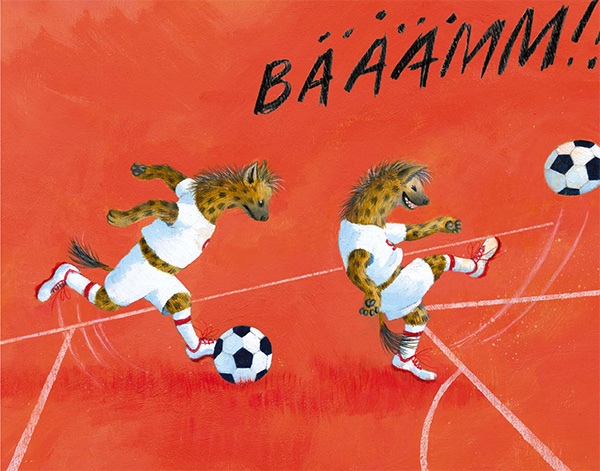
Questions requiring a decision
“Is it a nice or a nasty crocodile?”
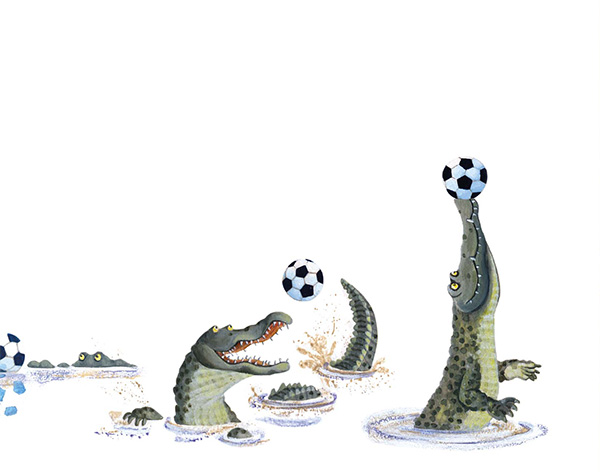
Knowledge questions
“Which animals can swim?”

Number questions
“How many animals can you see?”
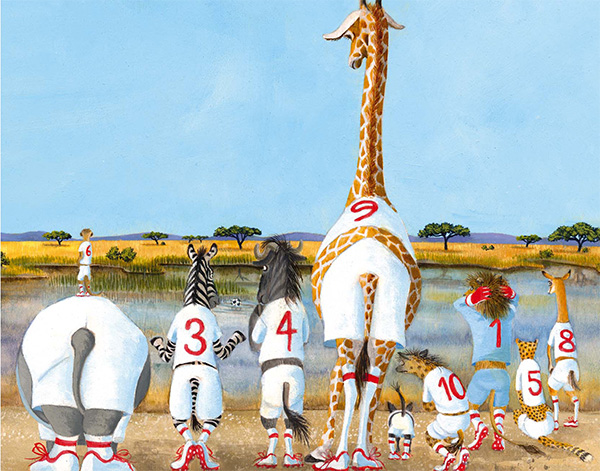
Questions on children’s own lives
“Have you ever seen any of these animals?”
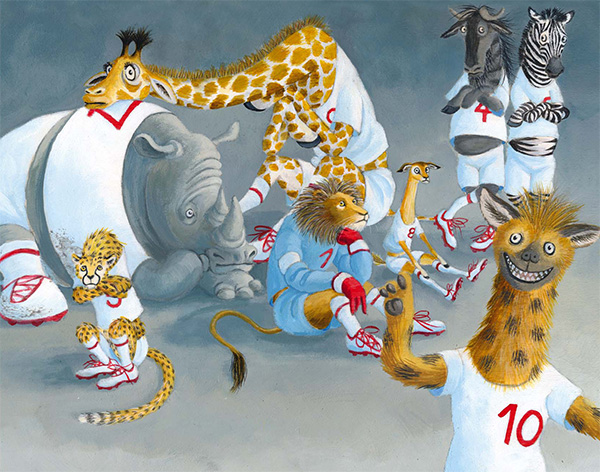
Memory questions
“How many animals were there at the beginning of the story?”
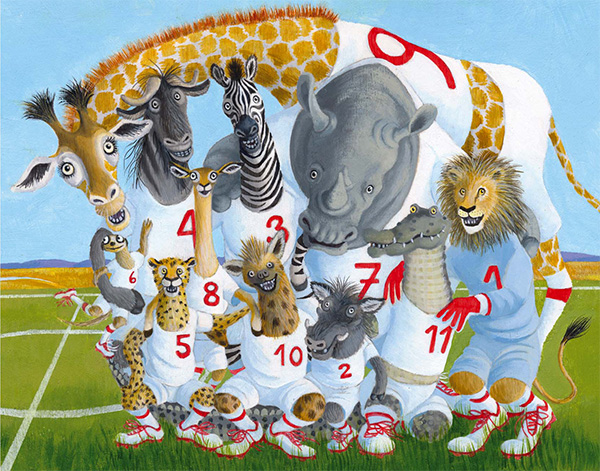
Reading in groups
It can be difficult to structure group discussion such that every child takes an active part.
Tips for groups:

Planned discussion breaks
Allow time for discussion after each page or chapter.

Facilitation
Remain neutral, as a facilitator to discussion, provided the rules of conversation are being observed.

Repetition
If a child has not understood something, repeat it, or re-read a passage. This will sustain children’s attention.


Tasks
Tasks

For your next reading session with a ReaDi picture book, think about how to prompt the children’s prior knowledge.

Use the questions and stimuli from this tutorial and the ReaDi picture book. You can find them by clicking on the lightbulb icon.
